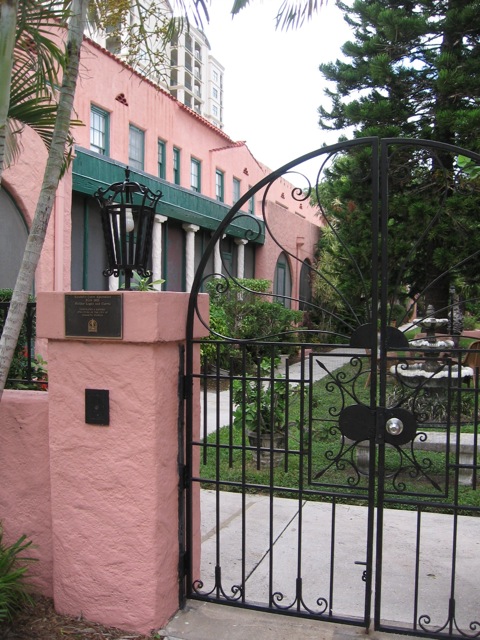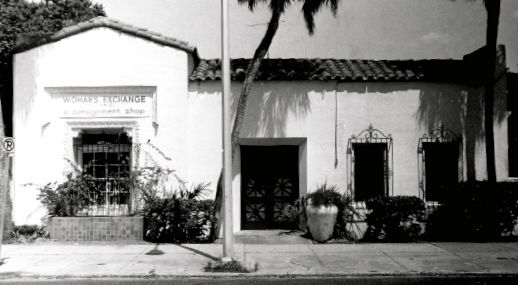Laurel Park became the City’s seventh National Register of Historic Places District March 11, 2008. It took 3 years, the work of many volunteers and came at a cost to the City of more than $15,000 (paid consultants) to survey, create boundaries, record the history and make application for the State of Florida to submit to the National Park Service for determination.
Before moving forward with the application meetings were held, articles published, and notices were sent to Laurel Park’s property owners to explain the process and the advantages of becoming a National Register Historic District. It was made clear to the owners by the City-hired consultant and City staff that designation would not impose any restrictions on what owners could do with their property.
Designation is an honor. By becoming a National Register District Laurel Park joined a prestigious list of more than 86,000 properties across our country and 1,602,903 resources whose history is now recorded and woven together to form a great heritage quilt of historic fabric throughout the United States.
To learn more about the National Register go to Dwight Young’s article in Preservation Magazine. It is a fantastic read!
There are 270 structures in Laurel Park’s National Register District that are designated as “contributing” to the Historic District, and 2 properties that were individually nationally designated prior to the district designation.
After Laurel Park was awarded the National Register District designation the City then enacted an ordinance that created regulations which now affect the owners of both the Individually designated national structures and those 270 structures that contribute to make up the District.
Division 8 of the Sarasota Zoning Code applies to historic preservation. It was written to regulate locally designated individual structures and local districts. The words National Register were never in the code prior to 2009 and today they only show up in two sections of the code.
Sec. IV-822
and Sec. IV-824
Minutes from the City’s Historic Preservation Advisory Board meetings confirm the lack of authority to review Individually designated National Register properties or properties that contribute to National Register Districts even after 2009……….
“Chair Hall noted that, at the last meeting, members were exploring the idea of increasing protections to historic resources within the City; particularly those listed individually on the National Register that are not locally designated and those listed as contributing structures to National Historic Districts that are also not locally designated. Those structures do not go though local review by this board.” Jan. 11, 2011
“Historic preservation protections in place in the City’s ordinances do not extend to National Register Properties.” Dec. 14, 2010
“It came as a surprise to citizens that nationally nominated properties are outside the reach of this Board.” Oct. 12, 2010
City staff, in the person of the City’s historic preservation planner, appears to be taking a different approach. More recent HP Board meeting minutes below find the historic preservation planner explaining why a structure is before the board for review…..
“the proposed demolition was before the HPB due to being a contributing structure to the Laurel Park National Historic District…”March 10, 2015
But staff seems to pick and choose what is regulated and what comes to the HBP Board. The structures below, all contributing structures to the Laurel Park NRHD, did not come to the HP Board for review.
1902 Laurel Street
1902 Laurel St. – a 1920’s contributing structure – Demolished 3/2014
1652A Oak St. – a 1925 contributing structure – Demolished 6/2015
1910 Laurel St. – a 1925 contributing structure – Demolished 10/2010
Let’s back up a little…..Prior to 2009 if you wanted to demolish your historically designated structure in Laurel Park and your structure was on the Florida master site file, which it likely is, you had a 45 day demolition stay after filing for a demolition permit with the building department. This stay was created to allow time for the City’s HP Board and local historic preservationists to contact interested parties who might move and reuse the structure rather than demolish it. After that 45 day period the property owner was free to proceed with the demolition.
So, what started as a way for the City, interested parties and preservationists to have time to find options to reuse historic structures vs. demolition has morphed into a burdensome, often hardship, situation by creating requirements for the structure owner to have to comply with. The 2009 demolition ordinance creates a 120 day stay period and the HP Board has the authority to extend the time to a year. The City requires a review of the building by the City’s historic preservation planner. The City has the right to require mitigation. The City may, and often does, require the owner appear before the City’s Historic Preservation Advisory Board, hire a preservation professional to document the building history, and obtain written quotes from a certified house mover for relocation of the structure and quotes from a salvage company to remove anything that can be repurposed. The City also charges an additional fee for an historic structure to be demolished, over an above the demolition fee. Whoa! That is a big dump on owners who never expected and were never notified they would have this responsibility.
We live in a great small city. It’s comparable in size to Charleston but it has nowhere near the amount of, or quality of, historic structures. Sarasota is not a community that values historic preservation due in large part to the lack of public discussion, inclusion and neglect of noticing residents about structures deserving of preservation.
In Laurel Park, property owners have little idea of the status of their old homes and even less about what incentives or benefits are offered to them to preserve and retain these small bungalows and cottages. Even the neighborhood association makes no effort to help the residents to understand what is designated in the district.
There are actually incentives and benefits offered by the City to preserve historic resources such as relief from building codes and an exemption from FEMA so you can add on to a historic structure in Laurel Park’s flood zone without having to build up. Who would know??? Where is the discourse, the education, the promotion? The City’s 2030 Comprehensive Plan has an entire chapter on Historic Preservation with goals and objectives that states the City will do just that.
This past May was preservation month. Every year in May communities and cities and states throughout the United States take the month to celebrate, honor and promote historic preservation. In the City of Sarasota, not one event was scheduled.
The regulations imposed on nationally designated structures should be removed.
They were enacted without notice to those most affected by them.
They are applied unequally and they fly in the face of the City of Sarasota’s voluntary program to preserve our historic resources.










